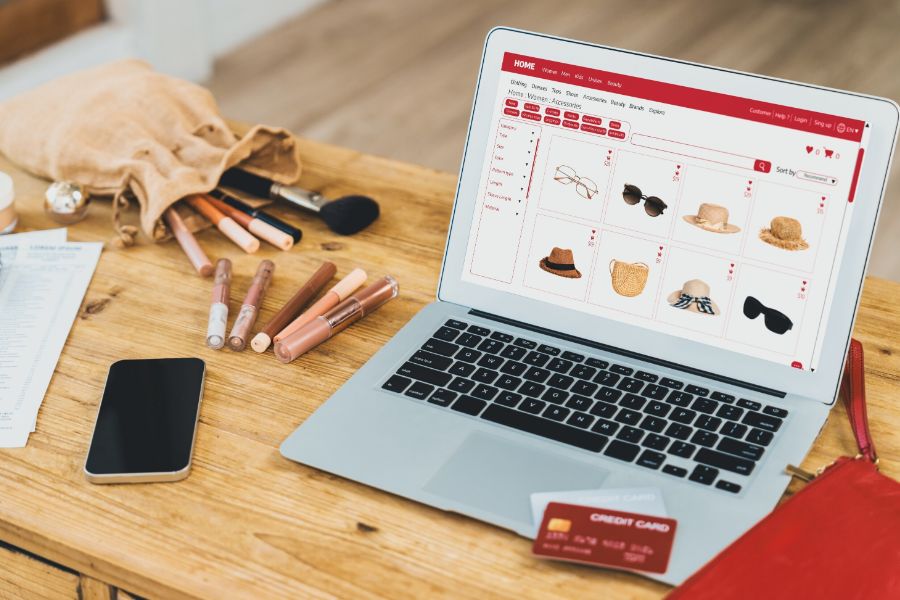In recent years, the retail landscape has witnessed a remarkable transformation with the proliferation of self checkout system. These technological marvels have fundamentally altered the way shoppers complete their purchases, offering a range of benefits. This article delves into the various advantages and considerations that shoppers should be aware of before engaging with self-checkout systems.
What Is Self Checkout System?
At its core, a self checkout system is a technology-driven service that empowers customers to autonomously manage the purchase process, from scanning products to making payments, without the need for direct cashier assistance. This self-service approach has gained prominence across various retail settings, including supermarkets, department stores, home improvement centers, and even libraries, offering several advantages to both shoppers and retailers.
This growing popularity is reflected in the market data, as in 2021, the estimated value of the market for self-checkout systems was just over four billion U.S. dollars globally. Over the period between 2021 and 2030, the value of the market size is forecast to grow to 13.54 billion U.S. dollars, highlighting the increasing recognition and adoption of self-checkout systems on a global scale.
Key features of the self checkout system
- Barcode Scanners: Central to the self-checkout experience are the built-in or handheld barcode scanners. Shoppers utilize these devices to scan the barcodes on their selected items, a process that instantaneously adds the products to their virtual shopping cart.
- Bagging Area: After scanning items, customers are required to place them in a designated bagging area adjacent to the self-checkout station. The system scrutinizes this step to confirm that the scanned items align with those placed in the bagging area.
- Payment Options: The self checkout system offers an array of payment methods, including credit and debit card transactions, the insertion of cash, and contactless payment through methods like mobile wallets. This versatile range of payment choices caters to diverse customer preferences.
- Assistance Options: Recognizing that occasional hiccups can occur, self-checkout stations often feature an attendant or customer service button. This button allows customers to request assistance if they encounter a problem or require guidance during the transaction.
- Security Measures: Self-checkout systems are equipped with security features to deter theft and shoplifting. Weight sensors are commonly employed to ensure that the items scanned match the items placed in the bagging area, thereby minimizing unauthorized removal of merchandise.
While the benefits of the self checkout system are substantial, it’s important to acknowledge the challenges they present. Inadequate monitoring can lead to increased theft, and some customers may find these systems less user-friendly, resulting in frustration. Furthermore, self-checkout may not be suitable for all retail environments or customer preferences, especially for those who prefer personalized service.
Overall, a self checkout system represents a technological innovation that offers a self-service alternative for processing purchases in retail settings. By providing convenience and potential cost savings for retailers, self-checkout systems have quickly become an integral aspect of the modern shopping experience, redefining the way customers interact with their chosen stores.
Benefits Of Using Self-Checkout System For Shoppers
Self-checkout systems have transformed modern retail, offering diverse benefits to shoppers. A June 2022 survey found that 46.5% of convenience store and pharmacy retailers in the US and the UK believed customers might choose competitors if they didn’t provide quick, queue-free scanning and payment options. This statistic highlights the growing significance of self-checkout systems in meeting customer demands and expectations in the retail sector.
Shoppers increasingly opt for these automated kiosks due to the numerous advantages they offer:
Faster Checkouts
One of the primary advantages of self-checkout systems is the speed they offer at the point of sale. Shoppers can process their purchases more swiftly compared to traditional cashier-operated lanes. This is especially beneficial for customers with only a few items or those who are in a hurry. The reduction in wait times contributes to a more efficient and convenient shopping experience.
Enhanced Privacy
Self-checkout systems provide shoppers with a degree of privacy that is often appreciated. Many individuals value the opportunity to handle their transactions independently, with minimal interaction with store personnel or other customers. This can be particularly advantageous when purchasing personal or sensitive items, ensuring a discreet shopping experience.
Control Over Bagging
Self checkout system allows shoppers to take control of the bagging process. They can choose how they want to arrange their items in bags, helping to protect delicate or fragile goods from damage. This level of control can also be reassuring for customers who want to ensure that their items are handled with care.
Convenient Payment Options
Self-service kiosks typically offer a variety of payment methods, including credit and debit cards, cash, and even mobile payment options. Shoppers have the flexibility to choose the payment method that best suits their preferences, making the entire checkout process more convenient.
Reduced Checkout Lines
As more shoppers embrace the self checkout system, traditional cashier-operated lanes often experience reduced congestion. This benefits those using self-checkout and can lead to shorter lines for those who prefer cashier-assisted checkout, improving the overall shopping experience for everyone.
Extended Operating Hours
Self-checkout kiosks can operate outside regular store hours, offering shoppers the flexibility to complete their purchases even when traditional checkout lanes are closed.
While self-checkout systems offer numerous benefits, it’s important to note that they may not be suitable for everyone. Some customers may find them less user-friendly, or they may prefer the personalized service provided by cashiers. Nevertheless, for those who appreciate speed, convenience, and independence during their shopping experience, self-checkout systems are a valuable addition to the retail landscape, enhancing the overall shopping journey.
Things You Need To Know Before Using The Self-Checkout System
Self checkout system has transformed the way we shop, offering a convenient and efficient alternative to traditional cashier-operated checkout lanes. To make your self-checkout experience as smooth and hassle-free as possible, here’s a detailed guide to keep in mind:
Skip It If You Have More Than 20 Items
Self-checkout systems are designed for expediency and efficiency, making them particularly suitable for shoppers with small to moderate-sized purchases. If your cart is overflowing with more than 20 items, it’s usually advisable to opt for the traditional checkout lanes with cashiers. Doing so not only ensures a faster checkout process for you but also keeps the self-checkout lines moving smoothly for others. This considerate approach helps maintain the intended efficiency of self-checkout.
Scan in the Order You Want to Bag
Efficiently using a self checkout system involves some strategic thinking. As you scan items, consider the order in which you intend to bag them. Scanning products in the sequence you plan to place them in your shopping bags can save time and minimize the risk of damaging delicate or fragile items during the bagging process. This simple but effective strategy ensures that your checkout process is both efficient and hassle-free.
Punch In the PLU Code
Not all items come with a barcode for scanning. Fresh produce, bulk items, or goods with damaged barcodes may require you to manually input the Product Lookup (PLU) code. These codes are typically found on the item or its bin. To expedite this process, take some time to familiarize yourself with common PLU codes or use the provided guide if available. Accurate entry guarantees that you’re charged the correct amount and contributes to a smooth and error-free checkout experience.
Skip the Self-Checkout If You Have Coupons
While self-checkout systems are designed for speed and efficiency, they may not always be the most convenient option if you have coupons, discounts, or require price adjustments. In such cases, consider using the traditional checkout lanes with cashiers who are trained to handle these aspects efficiently. Skipping self-checkout when you have coupons can save you time and ensure that you receive the full benefits of your discounts without any hiccups.
Place Items In The Bagging Area, Even If You Choose Not To Bag Them.
One crucial aspect of using self checkout system is the bagging area. Most self-checkout systems are equipped with weight sensors in this area to verify that the scanned items match those placed in the designated space. It’s essential to set your items in this area, even if you don’t plan to bag them, to prevent interruptions in the checkout process. Ensuring that items are in the bagging area helps the system accurately confirm your purchases and facilitates a smoother transaction.
Use Your Shopping Buddy to Your Advantage
Many self-checkout systems are designed to accommodate multiple shoppers at the same kiosk. This feature allows you and a shopping partner to share the space and scan items collaboratively. It can be especially advantageous when shopping with someone familiar with self-checkout. By working together to scan, bag, and pay for items, you can optimize the efficiency of the process. This collaborative approach can lead to a quicker and more streamlined shopping experience.
By keeping these key considerations in mind, you can maximize the benefits of self checkout system, ensuring a seamless, efficient, and satisfying shopping experience. Self-checkout is a valuable tool for those who appreciate convenience and independence during their shopping trips, and with these tips, you can make the most of this modern retail convenience.
Conclusion
The self checkout system has not only streamlined the shopping experience but has also introduced a new level of autonomy and convenience for consumers. However, as with any innovation, they come with their unique set of guidelines to ensure a seamless shopping encounter. By understanding these factors, shoppers can fully embrace the potential of self-checkout systems while respecting the operational needs of retailers and fellow shoppers. If you require further information or wish to discuss this matter, please do not hesitate to get in touch with us.
ConnectPOS is a all-in-one point of sale solution tailored to meet your eCommerce POS needs, streamline business operations, boost sales, and enhance customer experience in diverse industries. We offer custom POS with features, pricing, and plans to suit your unique business requirements.




